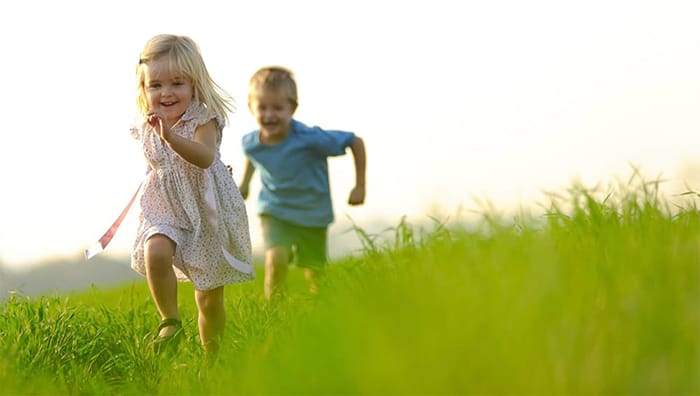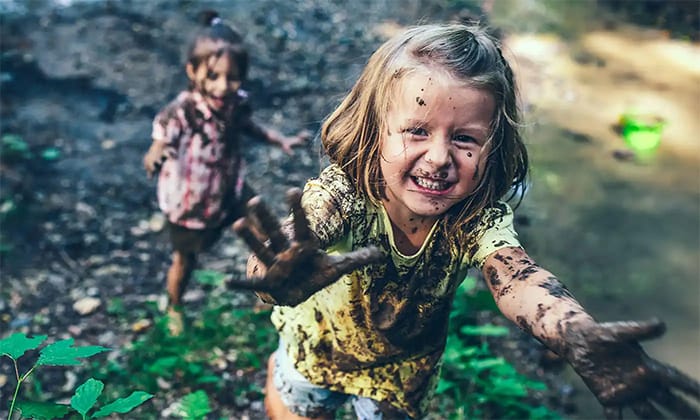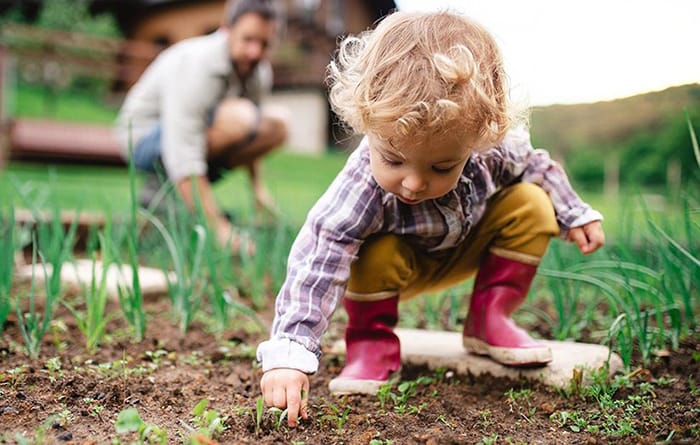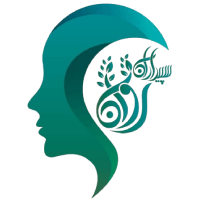
Blog
The impact of nature on child development

In the modern world, where digital life and urbanization have become inseparable parts of our existence, children’s connection with nature has faded. This disconnection from natural roots is not only a cultural loss but also carries numerous psychological and physical consequences.
Interestingly, Harvard researchers state that for every 1 hour of digital play, 2 hours of interaction with nature are needed to maintain the brain’s neural balance! This warning highlights how essential the balance between technology and nature is for children’s healthy development.
Moreover, recent studies in clinical psychology and neuropsychology show that interacting with natural environments can have profound effects on children’s physical, psychological, cognitive, and social growth. In this section, with a look at history and how nature influences human cognition and development, we will scientifically and comprehensively examine these effects.
فهرست عناوین
ToggleNature and Humans
From an evolutionary perspective, humans are deeply connected to nature. Archaeological and anthropological research shows that early humans, who spent most of their lives in natural environments, had more multidimensional brains compared to modern humans—brains that were cognitively optimized for living in complex and changing surroundings. This lifestyle included hunting, gathering food, and managing natural risks, all of which contributed to the development of cognitive skills such as spatial memory, problem-solving, and strategic thinking.
Research indicates that nature has acted as an evolutionary stimulus for brain development. Natural environments, with their diversity and complexity, helped promote the growth of neurons and neural connections. For example, the need to identify edible plants or defend against predators led to the development of emotional intelligence, memory, and selective attention.
Studies from the University of Michigan show that playing in nature activates gray matter in brain regions associated with focus and memory. This study found that children performed up to 32% better on attention tests after a 20-minute walk in the forest.
Historically, from ancient times through the Middle Ages, natural environments have been vital for human cognition and learning. Ancient philosophers and scientists such as Aristotle, who studied and reflected in nature, highlight the importance of nature as a place for thought and creativity. These historical experiences demonstrate that nature has been not only a habitat but also an endless school for learning and mental growth.
The influence of natural environments on child development—which we will explore further—includes any positive interaction with natural elements, from simple experiences like playing in forests to more complex activities such as environmental science projects. These experiences not only provide children with enjoyment and entertainment but also support their multidimensional growth.

How do children connect with nature?
Free play in nature: These activities are unstructured and without time or place restrictions, where children can freely express their creativity and curiosity. Free play in nature can include building structures with sticks, using leaves for art, or simply running in meadows. These activities allow children to solve challenges in their own way, leading to the development of problem-solving skills and independence.
- Nature excursions: These can include camping, hiking in forests, or visiting national parks, providing opportunities for experiential learning and strengthening social relationships.
- Nature-based education: Forest schools and outdoor classrooms use nature as an educational resource, helping develop cognitive and emotional skills.
- Agricultural activities: Parents and educators can involve children in the process of planting, caring for, and harvesting crops, teaching them valuable lessons about the life cycle, responsibility, and environmental importance.
Suggested article: The secret to raising a happy child
Benefits of a Child’s Connection with Nature
- Enhancement of Mental Health: Nature acts as a “psychological healer.” Activities in natural settings help reduce cortisol levels (the stress hormone), leading to improved mood and decreased anxiety. Neuropsychological studies have shown that natural environments activate brain areas such as the prefrontal cortex, which plays a role in emotion regulation and stress reduction. Additionally, natural sounds (like flowing water) enhance alpha brain waves, helping children enter a state of “calm.”
• Increase in Soft Attention: According to the “Attention Restoration Theory,” natural scenes allow the brain to shift from directed attention (such as focusing on screens) to “soft fascination,” a gentler form of focus. This process increases children’s ideation by 45%.
• Development of Cognitive Skills: Interaction with nature strengthens neural connections in areas related to memory, attention, and creativity. For example, research shows that children who regularly play in nature exhibit better critical thinking and problem-solving skills because nature offers them opportunities for exploration and experiential learning.
• Physical Growth: Activities in nature support the development of both gross and fine motor skills. Playing in natural environments requires coordination, balance, and muscle strength, all of which contribute to children’s physical development. Moreover, exposure to sunlight and fresh air promotes vitamin D production and boosts the immune system.
• Social Learning: Nature provides an ideal environment for social interactions. Group activities in natural settings teach children how to cooperate with others, show empathy, and improve their communication skills.
Suggested article: Learning disorder

Which Groups of Children Benefit the Most from Connecting with Nature?
- Children of All Ages: From toddlers to teenagers, all can gain benefits from nature.
- Children with Special Needs: Nature can help children with developmental, cognitive, or behavioral disorders develop new skills and boost their self-confidence.
- Urban Children: Due to the lack of green spaces in cities, interaction with nature is vital for these children.
- Children with Psychological Disorders: Especially for children struggling with ADHD, nature can help reduce symptoms. According to research from the University of Illinois, exposure to green spaces can reduce hyperactivity symptoms by up to 50%.
A Child Connected to Nature…
If a child has ADHD, their symptoms are reduced. Natural environments help minimize unnecessary stimuli and allow children to focus their attention more effectively. This contributes to reducing impulsivity and improving concentration.
They will experience better-quality sleep: natural daylight regulates the secretion of melatonin (the sleep hormone). Children who spend 1 hour outdoors daily fall into deep sleep 30% faster. Fresh air increases oxygen supply to the brain and enhances the REM phase of sleep.
Their academic performance improves: children who spend more time in nature perform better in academic tests due to strengthened memory, focus, and cognitive skills.
Their social relationships are strengthened: group activities in nature, such as games or collaborative projects, foster social skills.
Their sense of adventure and curiosity expands: nature gives children the opportunity to see the world with curious and adventurous eyes, helping to nurture an open mind ready for lifelong learning.
The return of children to nature is not merely a pastime but a fundamental strategy in upbringing and personal development. For this reason, it is best to let nature be children’s greatest teacher and friend.
برای مشاوره رایگان و رزرو وقت (یا اگر تماس گرفتید و قادر به پاسخگویی نبودیم) شماره تماس خود را وارد کنید. ما به زودی با شما تماس می گیریم!



